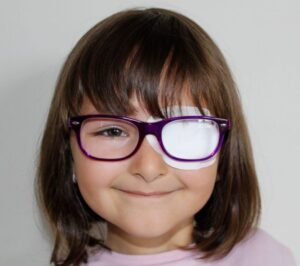Eye diseases
Amblyopia, also known as “lazy eye”

What is amblyopia?
Amblyopia, known as “lazy eye”,is a decrease in visual acuity caused by an abnormal development of vision, due to a visual stimulation disorder in the brain. In other words, it is an eye that has the ability to see correctly (it is well formed and the eye structures are intact), but has not learned to see, because it has not been properly stimulated.
Amblyopia is the most common cause of vision loss in children and affects about 4% of children, although the vision loss it causes can persist into adulthood, if not addressed in time during childhood.
Symptoms
Causes and risk factors
Treatment
Most commonly, amblyopia is not noticed, because the child sees well with one eye, while simply not using the “lazy” one. Thus, we can say that it is an asymptomatic pathology, which is usually not diagnosed, except with an eye examination. Hence the need for children to see an ophthalmologist every year from the age of 3-4.
